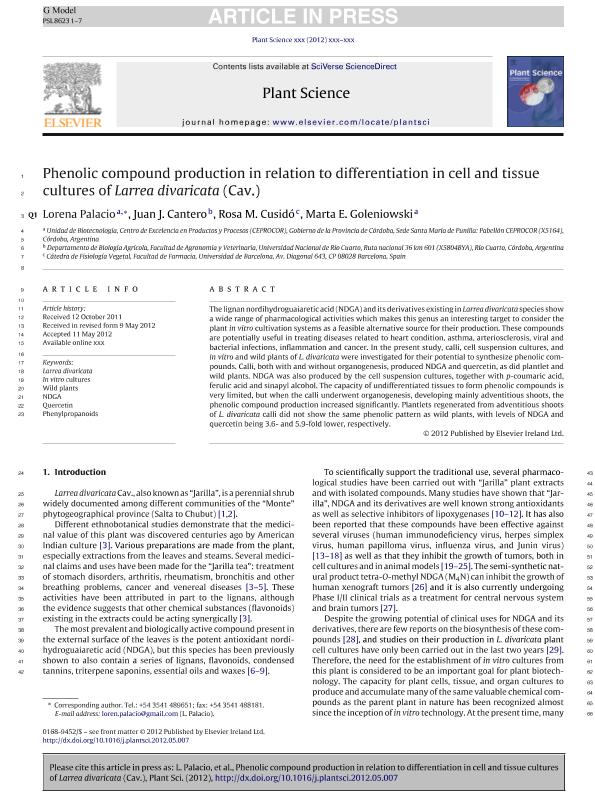Artículo
Phenolic compound production in relation to differentiation in cell and tissue cultures of Larrea divaricata (Cav.)
Fecha de publicación:
04/2012
Editorial:
Elsevier Ireland
Revista:
Plant Science
ISSN:
0168-9452
Idioma:
Inglés
Tipo de recurso:
Artículo publicado
Clasificación temática:
Resumen
The lignan nordihydroguaiaretic acid (NDGA) and its derivatives existing in Larrea divaricata species show a wide range of pharmacological activities which makes this genus an interesting target to consider the plant in vitro cultivation systems as a feasible alternative source for their production. These compounds are potentially useful in treating diseases related to heart condition, asthma, arteriosclerosis, viral and bacterial infections, inflammation and cancer. In the present study, calli, cell suspension cultures, and in vitro and wild plants of L. divaricata were investigated for their potential to synthesize phenolic compounds. Calli, both with and without organogenesis, produced NDGA and quercetin, as did plantlet and wild plants. NDGA was also produced by the cell suspension cultures, together with p-coumaric acid, ferulic acid and sinapyl alcohol. The capacity of undifferentiated tissues to form phenolic compounds is very limited, but when the calli underwent organogenesis, developing mainly adventitious shoots, the phenolic compound production increased significantly. Plantlets regenerated from adventitious shoots of L. divaricata calli did not show the same phenolic pattern as wild plants, with levels of NDGA and quercetin being 3.6- and 5.9-fold lower, respectively.
Palabras clave:
IN VITRO CULTURES
,
LARREA DIVARICATA
,
NDGA
,
PHENYLPROPANOIDS
,
QUERCETIN
,
WILD PLANTS
Archivos asociados
Licencia
Identificadores
Colecciones
Articulos(CCT - CORDOBA)
Articulos de CTRO.CIENTIFICO TECNOL.CONICET - CORDOBA
Articulos de CTRO.CIENTIFICO TECNOL.CONICET - CORDOBA
Citación
Palacio, Lorena; Cantero, Juan Jose; Cusidó, Rosa M.; Goleniowski, Marta Ester; Phenolic compound production in relation to differentiation in cell and tissue cultures of Larrea divaricata (Cav.); Elsevier Ireland; Plant Science; 193-194; 4-2012; 1-7
Compartir
Altmétricas




